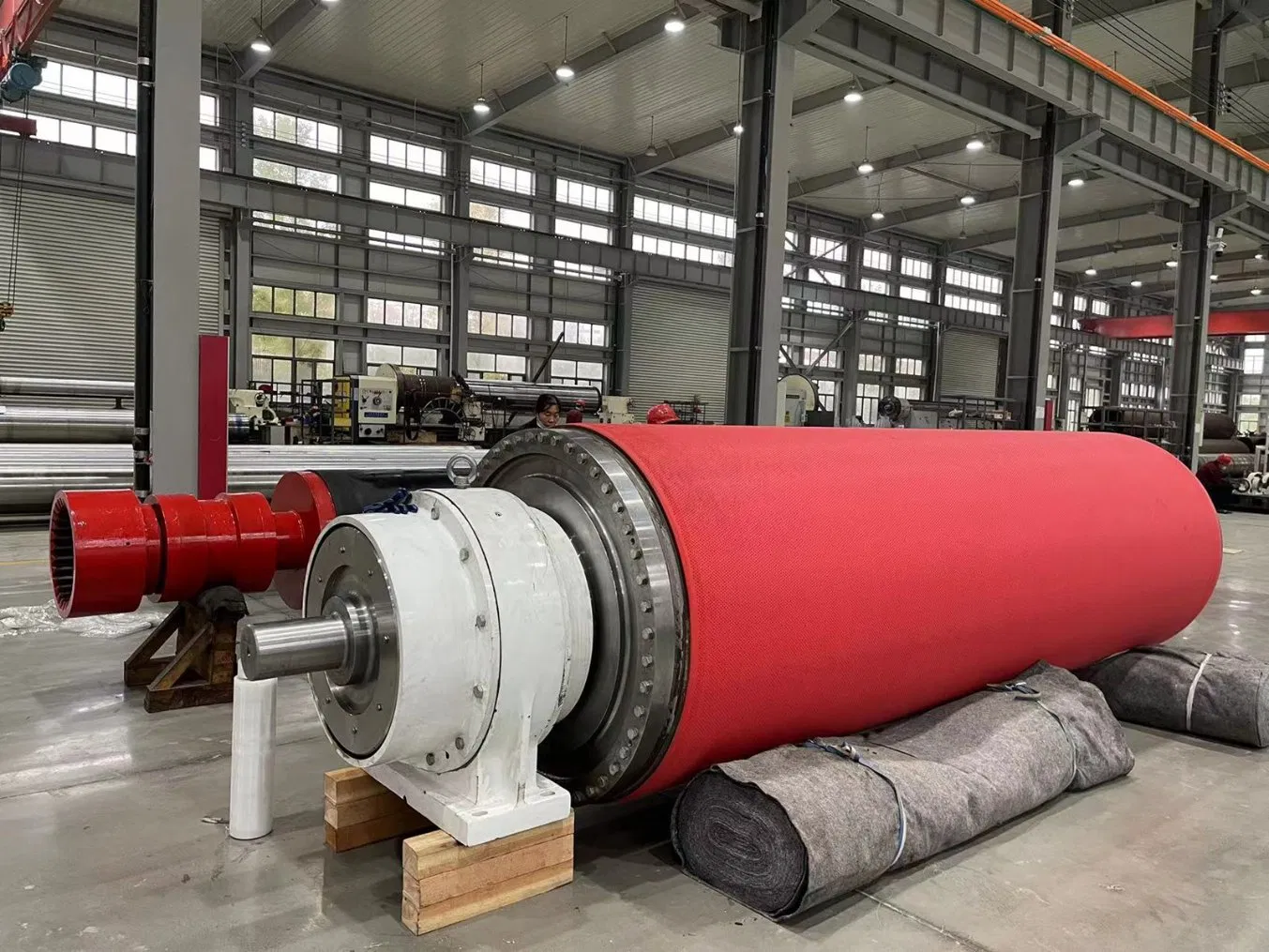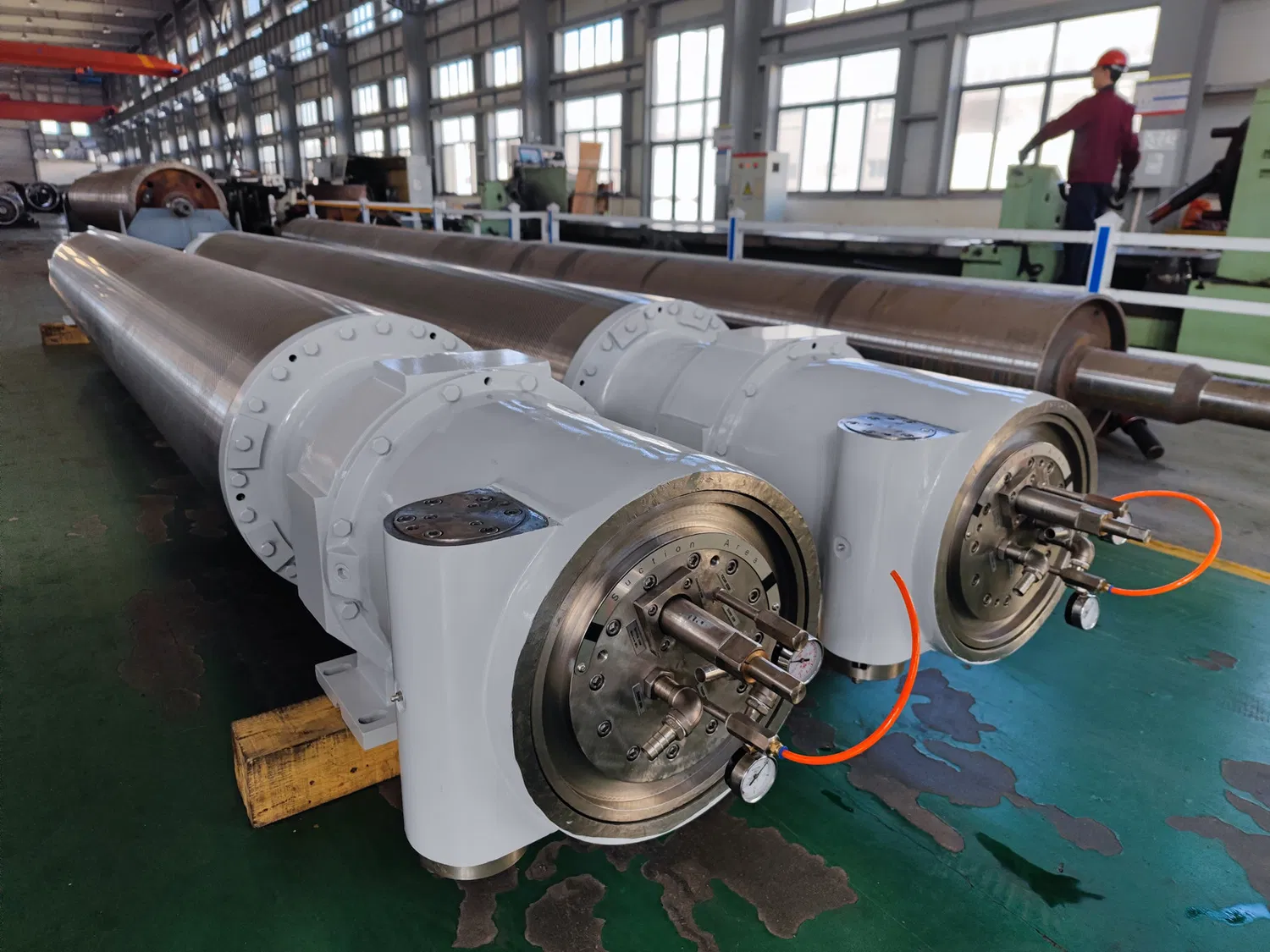In the heart of every paper mill, the paper machine stands as a colossal testament to industrial ingenuity—a symphony of synchronized components working tirelessly to transform pulp slurry into the finished paper that underpins our modern world. At the core of this process are the paper machine rolls. To the untrained eye, they may seem like simple cylinders, but in reality, they are highly sophisticated, precision-engineered components. Their performance dictates everything from production speed and energy consumption to the final quality of the paper sheet. It’s no surprise, then, that leading mills don’t leave the selection of these critical assets to chance.
The decision to invest in a specific roll solution is a calculated one, based on a deep understanding of the immense pressures—both physical and financial—of modern papermaking. It's a choice that hinges on trust, performance, and a partnership that extends far beyond the initial sale. So, what truly sets a preferred roll solution apart? Why do industry leaders consistently turn to our specific approach? It boils down to a philosophy built on four foundational pillars. This article will explore the four key reasons leading mills choose our precision-engineered paper machine roll solutions, delving into how each factor directly contributes to a more efficient, reliable, and profitable operation.
Reason 1: Uncompromising Precision Engineering for Superior Performance
The term "precision" is often used in manufacturing, but in the context of paper machine rolls, it represents a multi-faceted commitment to microscopic accuracy and material excellence. A roll operating at speeds exceeding 2,000 meters per minute has zero tolerance for error. Even the slightest imperfection can lead to vibrations, sheet defects, and premature wear. This is where, in my experience, the difference between an average roll and a superior one becomes starkly clear. Our approach to precision engineering is holistic, focusing on three critical areas.
Material Science and Selection
A roll is only as good as the materials it's made from. The selection process is a science in itself, balancing factors like strength, corrosion resistance, thermal conductivity, and cost. We don't believe in a one-size-fits-all material. A press roll, which endures immense nip pressures, requires a different material composition than a dryer roll, which must efficiently transfer heat. Our process begins with a deep analysis of the roll's specific application.
- For high-load positions: We may specify advanced steel alloys or ductile iron, ensuring structural integrity under extreme mechanical stress.
- For corrosive environments: Stainless steel or specialized composite materials are often chosen to resist chemical attack from pulp additives and white water.
- For heat transfer applications: We focus on materials with optimal thermal properties to ensure uniform drying and prevent energy waste.
This meticulous material selection is the bedrock of a roll's long-term reliability and performance.
Dynamic Balancing and Vibration Control
Interestingly enough, one of the most critical aspects of precision is something you can't see: the roll's balance. As a roll rotates at high velocity, any uneven mass distribution is magnified, creating destructive vibrations. These vibrations don't just cause chatter marks on the paper; they accelerate wear on bearings, drive components, and the machine frame itself. To be honest, this is a primary cause of unplanned downtime in many mills.
Our dynamic balancing process is rigorous. Each roll is balanced at its intended operational speed to standards that often exceed industry requirements. By identifying and correcting imbalances down to a few grams, we ensure a roll runs smoothly and quietly. The result is a more stable machine, a higher quality sheet, and a significantly longer operational life for the entire roll assembly.

Surface Finish and Coating Technology
The surface of the roll is where the magic happens—it's the direct interface with the paper sheet. The right surface finish and cover are crucial for proper sheet release, water removal, and creating the desired paper texture. We offer a vast portfolio of advanced coating and cover solutions, each engineered for a specific purpose.
- Polyurethane Covers: Ideal for press rolls, offering excellent wear resistance and the right combination of hardness and elasticity for dewatering.
- Ceramic Coatings: Applied to rolls in abrasive positions, these coatings provide an incredibly hard, low-friction surface that resists wear from doctor blades and contaminants.
- Chrome Plating: A classic solution for calender rolls, providing a mirror-like finish that imparts smoothness and gloss to the paper sheet.
- Tungsten Carbide Coatings: Used in the most demanding applications, offering unparalleled durability and longevity.
Precision here means ensuring uniform coating thickness, perfect bonding to the roll shell, and the exact surface topography required for the application. It’s this final touch that often defines the quality of the end product.
Reason 2: Solutions Tailored "For Your Needs" – Not Off-the-Shelf
Every paper mill is unique. It has its own machine configuration, produces specific paper grades, and faces distinct operational challenges. A standard, off-the-shelf roll simply cannot address this level of specificity. The phrase "For Your Needs" is the core of our philosophy; it signifies a collaborative, consultative approach that results in a truly bespoke solution. Have you ever considered the cumulative cost of running a component that is "good enough" but not "just right"?
The Initial Consultation and Needs Analysis
Our process never starts with a product catalog. It starts with a conversation. Our engineers work directly with mill managers, maintenance supervisors, and machine operators to understand their pain points. We ask the important questions:
- What are your primary causes of downtime related to rolls?
- Are you struggling with sheet profile issues like moisture streaks or barring?
- Are you planning to increase machine speed or change paper grades in the future?
- What are your energy consumption and sustainability goals?
This deep-dive analysis allows us to diagnose the root cause of problems, not just treat the symptoms. It's about understanding the entire ecosystem in which the roll will operate.
Custom Design and Application-Specific Engineering
With a clear understanding of the mill's needs, our design team gets to work. This is where customization truly comes to life. We leverage advanced tools like Finite Element Analysis (FEA) to simulate the stresses a roll will endure and optimize its internal structure for maximum strength and minimum weight. Customization can take many forms:
- Custom Crowning: We design a precise roll crown (a slight variation in diameter along the roll's length) to compensate for roll deflection under load, ensuring a uniform nip pressure and a flat moisture profile.
- Specialized Grooving or Drilling: For press and suction rolls, the pattern, depth, and shape of grooves or holes are meticulously designed to optimize water removal for a specific paper grade and machine speed.
- Internal Heating/Cooling Systems: For temperature-critical applications, we design complex internal flow systems (like steam-heated or water-cooled rolls) to maintain a precise and uniform surface temperature.
This level of bespoke engineering ensures the roll is not just a replacement part, but a strategic upgrade to the paper machine.
Reason 3: Proven Reliability That Leading Mills Depend On
In the paper industry, uptime is everything. Unplanned downtime can cost a mill tens of thousands of dollars per hour. Therefore, when leading mills make a capital investment, their primary concern is reliability. They choose partners with a proven track record of delivering components that perform consistently, day in and day out, under the most demanding conditions. This trust isn't given lightly; it's earned over years of dependable service and tangible results.
Minimizing Unplanned Downtime
The single greatest value of a high-quality roll is its ability to prevent unexpected failures. A catastrophic roll failure—be it a bearing collapse, a shell crack, or a cover delamination—can bring an entire production line to a grinding halt for days. Many experts agree that the cost of one such event can easily exceed the initial cost of the roll itself.
Our focus on robust design, superior materials, and stringent quality control is all geared towards one primary objective: maximizing the mean time between failures (MTBF). By engineering for durability, we provide mill managers with the peace of mind that comes from predictable maintenance schedules and a dramatic reduction in unforeseen, costly interruptions.

Consistency in Paper Quality
Reliability isn't just about avoiding failure; it's also about consistent performance. A roll that degrades over time—losing its profile, developing surface defects, or vibrating—will produce an inconsistent paper product. This leads to customer complaints, rejected reels, and a damaged reputation. Leading mills, which supply paper to the most demanding print and packaging customers, cannot afford such variability.
Our rolls are designed to maintain their critical parameters—dimensions, surface properties, and balance—for extended periods. This stability translates directly into a more uniform paper sheet. Mills that use our solutions report more consistent cross-directional (CD) profiles for basis weight, moisture, and caliper, which is the ultimate measure of a paper machine's performance.
Reason 4: Comprehensive Roll Solutions That Drive Mill-Wide Efficiency
Finally, leading mills recognize that they aren't just buying a piece of steel or a roll cover; they are investing in a comprehensive solution. A "Paper Machine Roll Solution" encompasses the entire lifecycle of the asset, from initial design to ongoing maintenance and eventual refurbishment. It's a partnership approach that delivers value far beyond the physical component.
Beyond the Roll: Installation and Service
A perfectly engineered roll can be compromised by improper installation or poor maintenance. It's worth noting that a significant number of roll issues originate during this critical phase. We provide more than just a component in a crate. Our solutions often include:
- Expert Supervision: Our field service technicians can be on-site to oversee the installation, ensuring proper alignment, bearing fit, and connection to drive and utility systems. - Predictive and Preventive Maintenance: We partner with mills to establish proactive maintenance programs. This includes regular roll inspections, non-destructive testing (NDT), and vibration analysis to identify potential issues before they become critical failures.
- Roll Grinding and Refurbishment: No roll lasts forever. We offer state-of-the-art grinding, re-covering, and re-balancing services to restore rolls to their original specifications, significantly extending their useful life and maximizing the return on investment.
Energy Efficiency and Sustainability Gains
In today's environmentally conscious world, efficiency is synonymous with sustainability. A well-designed roll solution contributes directly to a mill's green initiatives. A lighter, yet stronger, roll design reduces the inertial load on the drive system, lowering electricity consumption. A press roll optimized for dewatering can remove more water mechanically, reducing the thermal load (and natural gas consumption) in the dryer section—the most energy-intensive part of the machine. These incremental gains, when applied across the dozens of rolls in a machine, add up to substantial energy and cost savings, helping mills meet both financial and environmental targets.
In conclusion, the choice of a paper machine roll solution is a critical decision that echoes through every facet of a mill's operation. The leading mills in the industry make this choice based on a clear-eyed assessment of value. They look beyond the price tag to the four pillars of performance: uncompromising precision engineering, bespoke solutions tailored to their specific needs, proven reliability that secures their uptime, and a comprehensive partnership that drives efficiency across the entire asset lifecycle. It is this integrated approach that truly defines a modern roll solution and builds the foundation for a successful, competitive, and profitable future in papermaking.
For more detailed information, please visit our official website:paper machine roll solutions
About the author: Jonathan Kade is a Senior Applications Engineer with over 25 years of experience in the pulp and paper industry. Specializing in paper machine optimization and component design, he has worked directly with dozens of mills across the globe to diagnose production bottlenecks and engineer high-performance roll solutions. His expertise lies in the intersection of material science, dynamic mechanics, and practical, hands-on papermaking. He is passionate about helping mills achieve new levels of efficiency and quality through precision engineering.


